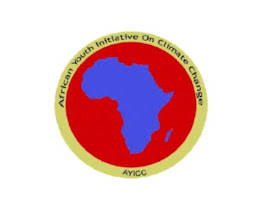Doha Briefs Approaching the End
It is late, very late and
the convention centre is emptying up pretty quickly. There are only a handful
of us here still churning out the last snippets of energy for the day. Well
there have been a couple of issues that still have to be sorted out and some
which are pretty crucial.
Adaptation
For starters the issue of
financing for adaptation mechanisms is proving to be quite a hustle. There is
still the issue of provision of funds for the Adaptation program is essential
yet not yet finalized. The kitty is running out. In fact it is in the red in
terms of the amount of funds available. The gist of the position of
particularly developing countries is that there is need to sort out the issue
of provision and access of ADEQUATE financial and other
resources to facilitate adaptation mechanisms as regards climate change. These
funds are crucial to the efficient operation of the National Adaptation
Programs for Action (NAPA) since they
draw upon these resources. Conversely, the issue of compensation and
rehabilitation in addressing the issue of adaptation is also pending and
crucially depends on the finances available. The window of opportunity has been
closing since practically there are still three days to go before conclusion of
the talks[1].
For now it is fingers crossed.
Mitigation and Ambition
Another issue of
importance has been that of raising ambition. This regards to the overall
responsibilities or targets of parties with regard to issues such as carbon emissions
reduction targets. This aspect touches on mitigation mechanisms for the
parties. There is a growing concern about the unresolved issues such as access
to sustainable development and the re-assessment of a long term temperature
goal. There are some countries, particularly those from annex 1 parties, which
comprises of developed states which still act as hurdles to an enhanced common
and binding position as regards the temperature goal[2].
Moving forward, the goal is to ensure that the relevant organs dealing with
adaptation and mitigation carry out their work in order to see to it that there
is a global binding deal by 2015 at the very latest
Surplus Emissions Again!!
Surplus emissions seem to
be the elephant in the room. As referred to earlier, the Kyoto Protocol expires at the end of the year and the pressure is on the parties to “extend
the mandate” of the protocol. It seems fairly simple really, meet agree and
ratify. There is a problem however some parties, again developed countries are
reluctant to commit to a second agreement, essentially stalling the process and
jeopardizing quite a lot. Some countries have already pulled out.
There are some proposals
that [3]are
being thrown among the pigeons when it comes to increased ambition. Increase of
ambition is crucial to deal with climate change in the next ten years. The
targets set in the years preceding 2020 have to be increased thus resulting in
increased carbon reduction.
Moving on
The issue of oil subsidies
is also causing some ripples particularly among developing countries. Oil
subsidies threaten any decisive action by some parties particularly Annex 1 Parties. Phasing these out would do a great deal in ensuring that the movement towards
realization of the targets set are met.
Coal is also critical. A
reduction in the utilization of coal is key in reducing carbon emissions and
hence reduces the effects of climate change[4]. Parties have been put
under quite some pressure to ensure that these talks end up fruitfully. Despite
this fact, the hopes for a concrete binding agreement are quickly fading. We
all watch with bated breath to see what Parties will come up with.
The call for more action
has been made; the time is fast running out, the message is clear…Make Doha Count!!
By: Reuben Makomere

Comments
Post a Comment